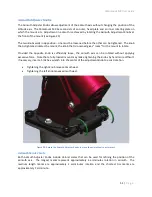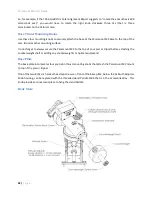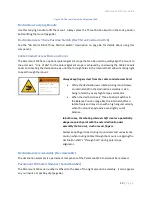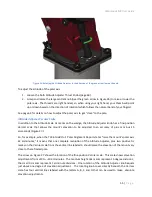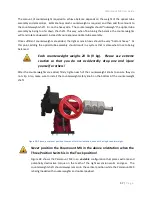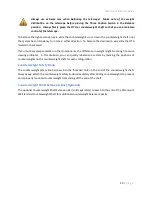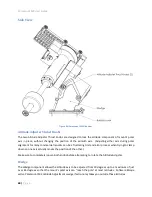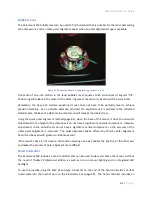
Paramount MX User Guide
65 |
P a g e
How To Polar Align
Once the Paramount MX has been securely mounted to the pier or tripod, the next step is to align the
mount’s polar axis with the celestial pole. Make sure to review “Polar Alignment” on page 11 for an
explanation why polar alignment is so critical.
Software Bisque recommends starting with the quick polar alignment method, then using either the
polar alignment scope or TPoint to refine the alignment. If a different polar alignment technique works
for you, by all means, use it!
Quick Polar Alignment Method
The Paramount MX home position can be used in conjunction with
TheSkyX Professional Edition
to help
align the altitude axis to within about five arcminutes of celestial pole (which is a good
starting point
).
When the Paramount MX is at the home position, the mount is always oriented at the same, fixed
mechanical position (to about one arcsecond or so). This position is very near hour angle 2.0 and
declination 0.0 and, for a perfect mount, represents a point on the celestial sphere that is exactly two
hours west of the meridian on the celestial equator.
Using this known mount orientation and the observer’s location, date, time and time zone,
TheSkyX
Professional Edition
can be used to slew the mount to
computed
position of an object (usually a star or
other bright object) on the celestial sphere.
Once the telescope has been slewed to the object, the mount’s
polar axis
(not the telescope) can be
adjusted until the bright object is centered in the eyepiece. This technique leverages the home position
and the computed equatorial coordinates of an object to align the mount’s polar axis to the celestial
pole.
The quick polar alignment method can be performed during the daylight hours by slewing to a planet,
bright star or even the Sun (provided the proper solar filters are used). Another advantage is that the
celestial pole need not be visible.
While the home position is mechanically fixed, it is not necessarily precisely at hour angle 2.0000 and
declination 0.0000. This is in part due to slight variations in the position of the emitter-detector pair in
the home sensors as well as optical and mechanical non-perpendicularities. For this reason, the quick
polar alignment method should be deemed a “very good” but not “perfect” technique.
After performing a quick polar alignment, either TPoint and the TPoint Polar Alignment Report or the
polar alignment scope (when one is available) should be used to refine polar alignment.
Step-By-Step Quick Polar Alignment Procedure
For portable setups, provided the telescope is mounted on the Versa-Plate consistently, the quick polar
alignment procedure can produce fairly accurate and repeatable polar alignment.

